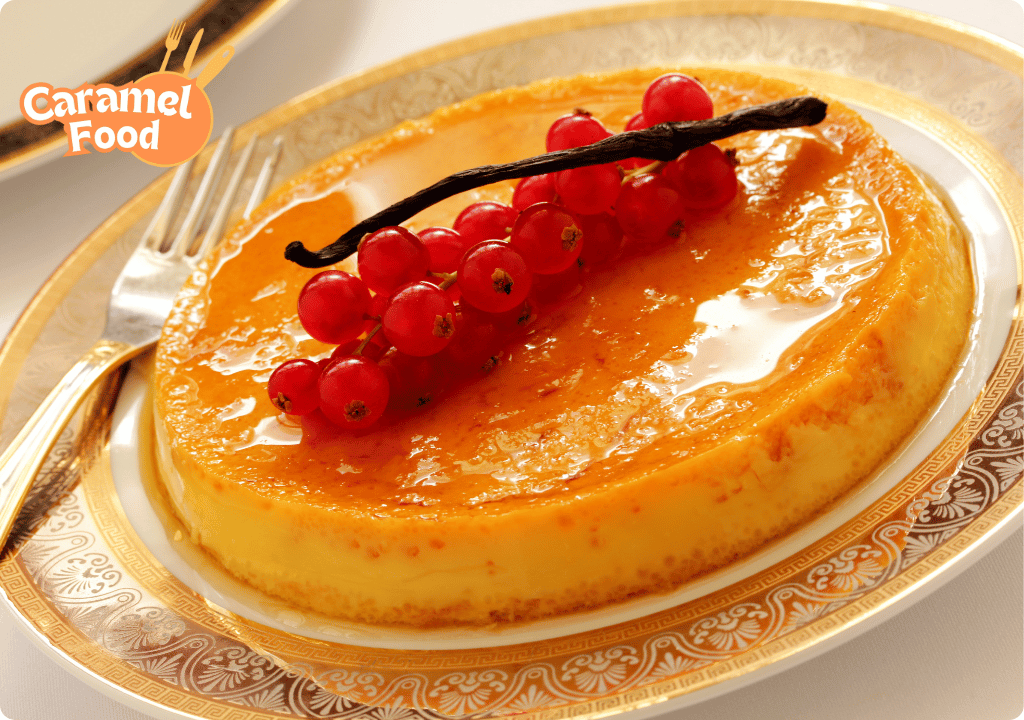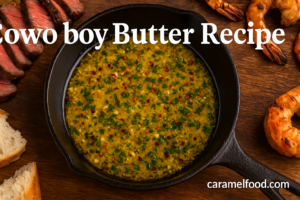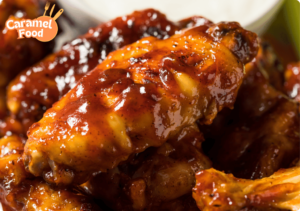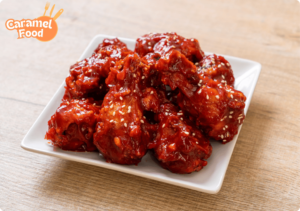The art of crafting classic vanilla caramels intertwines the precision of culinary science with the age-old tradition of confectionery making. These delectable morsels, with their soft, chewy texture and rich vanilla undertones, have been cherished across generations. In this comprehensive guide, we delve into the intricacies of creating the perfect vanilla caramel, ensuring that every batch exudes both flavor and finesse. From understanding the role of each ingredient to mastering the technique of caramelization, this guide will equip you with the knowledge to produce caramels that are not only delicious but also a testament to confectionery craftsmanship.
Ingredients and Tools: The Foundations of Perfection
To embark on the journey of making classic vanilla caramels, one must first assemble the quintessential ingredients and tools. The selection and quality of ingredients are paramount to achieving the desired texture and flavor profile. Each component plays a distinct role in the final product, contributing to its taste, texture, and appearance. Equally important are the tools, which ensure precision and consistency in every batch.
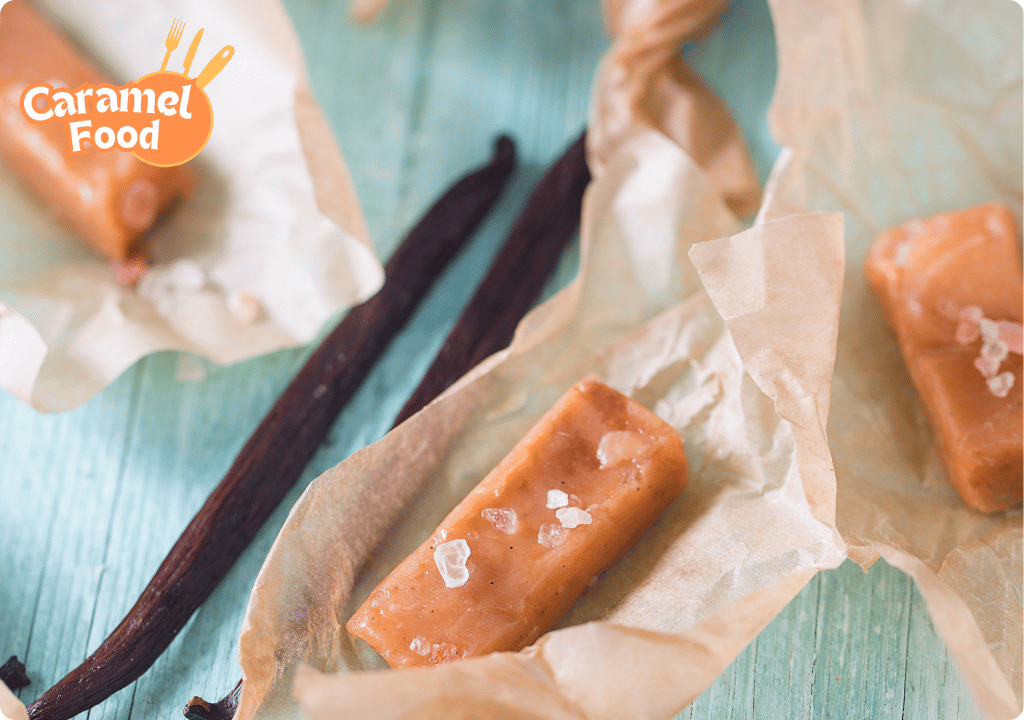
Essential Ingredients
- Granulated Sugar: The cornerstone of caramelization, granulated sugar is responsible for the candy’s sweetness and caramel color. Its fine crystals melt evenly, allowing for a smooth transformation into caramel. The choice of sugar can also subtly influence the flavor, with organic or raw sugars adding a different dimension.
- Heavy Cream: Contributing to the creaminess and chewiness, heavy cream integrates seamlessly into the sugar matrix. It adds moisture and richness, ensuring the caramels are soft rather than brittle. The fat content in the cream is crucial, as it affects the mouthfeel and stability of the caramels.
- Unsalted Butter: Imparting richness and a smooth mouthfeel, butter is indispensable in caramel recipes. It not only enhances the flavor but also helps in creating a stable emulsion with the sugar and cream. The quality of butter can elevate the caramel’s taste, making it essential to use high-quality, fresh butter.
- Vanilla Extract: The star of the recipe, pure vanilla extract imparts its characteristic warmth and depth. The type of vanilla, whether Madagascar, Tahitian, or Mexican, can influence the subtleties of the flavor profile, offering opportunities for personalization.
- Light Corn Syrup: Aiding in preventing crystallization, corn syrup ensures a smooth caramel consistency. It acts as an interfering agent, keeping sugar molecules from crystallizing and thus maintaining the desired texture. In some recipes, glucose syrup can be used as an alternative.
- Salt: A pinch of salt enhances and balances the sweetness, accentuating the vanilla’s subtle notes. It acts as a flavor enhancer, bringing out the complexities in both the sugar and vanilla. Sea salt or kosher salt are preferred for their purity and lack of additives.
Necessary Tools
- Candy Thermometer: Precision in temperature control is crucial; a candy thermometer ensures the caramel reaches the optimal consistency. It is an indispensable tool for achieving the exact stages of sugar cooking, from soft ball to hard crack.
- Heavy-Bottomed Saucepan: Even heat distribution is key to avoiding burnt sugar. A heavy-bottomed pan provides a stable cooking surface, reducing the risk of hot spots that can lead to uneven cooking or burning.
- Silicone Spatula: For stirring without scraping or introducing air bubbles. Silicone is heat-resistant and flexible, perfect for scraping down the sides of the pan without damaging the caramel.
- 8×8 inch Baking Dish: Lined with parchment paper for easy removal of set caramels. The size of the dish determines the thickness of the caramels, and parchment paper ensures they can be removed cleanly without sticking.
The Science of Caramelization
Understanding the science behind caramelization is essential to mastering the classic vanilla caramel recipe. As sugar is heated, it undergoes a complex transformation known as the Maillard reaction, which results in the characteristic golden-brown hue and distinct caramel flavor. This process involves both the breaking down of sugar molecules and the development of new compounds that contribute to the aroma and taste.
Temperature Control
Achieving the perfect caramel requires meticulous temperature management. The sugar mixture must be heated to the precise stage where caramelization occurs but before it reaches the point of burning. Typically, the desired temperature range is between 240°F and 248°F (115°C to 120°C). This range ensures that the caramels are firm yet chewy, avoiding the pitfalls of either undercooked or overly hard candy. Monitoring the temperature accurately prevents the sugar from burning, which would impart a bitter taste.
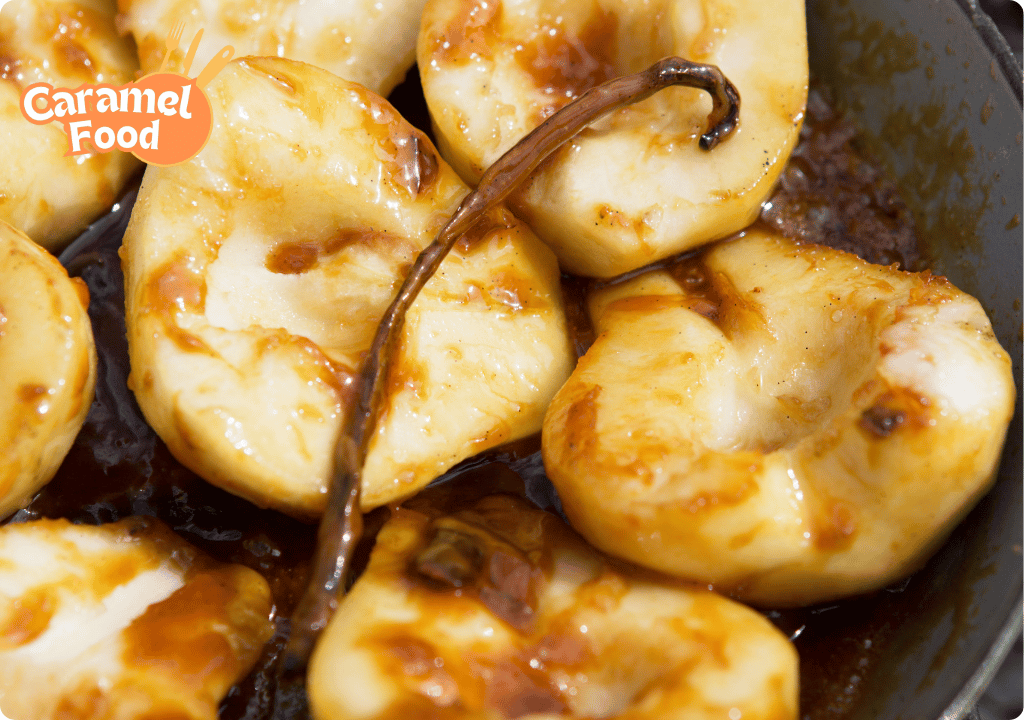
The Role of Vanilla
Vanilla extract plays a pivotal role in the classic vanilla caramel recipe. Its aromatic compounds interact with the sugars and fats, enhancing the complexity of the caramel’s flavor profile. The addition of vanilla should be timed judiciously—preferably once the caramel mixture has reached the desired temperature and is removed from heat. This ensures that the delicate vanilla notes are preserved and not diminished by prolonged exposure to high temperatures. The timing of vanilla addition can also affect the intensity of its flavor, with earlier additions resulting in a more subtle taste.
Preventing Crystallization
Crystallization is a common challenge in caramel making, where sugar crystals can form and ruin the smooth texture. The introduction of corn syrup or another interfering agent helps prevent this by disrupting the crystallization process. Stirring techniques are also important; gentle, minimal stirring reduces the chances of introducing air, which can trigger crystallization. Additionally, ensuring all sugar is fully dissolved before boiling reduces the likelihood of crystal formation.
Crafting the Perfect Caramel: A Step-by-Step Guide
The process of making classic vanilla caramels is both an art and a science. It involves careful attention to detail, precise timing, and a deep understanding of the interactions between ingredients. This step-by-step guide will walk you through each stage, ensuring that your caramels turn out perfectly every time.
Step 1: Preparation
Begin by lining the baking dish with parchment paper, ensuring the paper extends beyond the edges for easy lifting. This preparation facilitates the seamless removal of the caramel once it has set. The parchment paper acts as a barrier, preventing the caramel from sticking to the dish and making it easier to cut the caramels into neat pieces. It’s also important to have all ingredients measured and ready, as caramel making requires quick actions.
Step 2: Creating the Mixture
In the heavy-bottomed saucepan, combine the granulated sugar, light corn syrup, and a small amount of water. Stir gently to moisten the sugar, taking care not to introduce air bubbles. Place the saucepan over medium heat, allowing the sugar to dissolve fully. Insert the candy thermometer to monitor the temperature as the mixture heats. The initial mixing should be gentle to avoid splashing, which can lead to uneven cooking or burning. As the mixture heats, avoid stirring too much to prevent crystallization.
Step 3: Incorporating Cream and Butter
Once the sugar mixture reaches a light amber color, carefully introduce the heavy cream and unsalted butter. The mixture will bubble vigorously—exercise caution and stir continuously to ensure even integration of the cream and butter into the caramel. This step is crucial for achieving the correct consistency and flavor, as the fats in the cream and butter contribute to the caramel’s richness and chewiness. The vigorous bubbling is normal and indicates the caramel is reacting with the new ingredients, which cool and thicken the mixture.
Step 4: Achieving the Perfect Consistency
Allow the caramel to continue heating until it reaches the desired temperature range of 240°F to 248°F. This temperature ensures the caramels achieve their quintessential chewy texture. Upon reaching the target temperature, remove the saucepan from heat and swiftly stir in the pure vanilla extract and a pinch of salt. The quick addition of vanilla and salt prevents overcooking and preserves the flavors. Once incorporated, the caramel should be poured immediately to avoid further cooking.
Step 5: Setting the Caramels
Pour the caramel mixture into the prepared baking dish, spreading it evenly. Allow the caramel to cool at room temperature until set, which typically takes several hours. For expedited cooling, the dish may be transferred to the refrigerator once it has reached room temperature. Cooling at room temperature ensures even setting and prevents the caramel from becoming too hard. Once set, the caramel can be cut into pieces and wrapped for storage or serving.
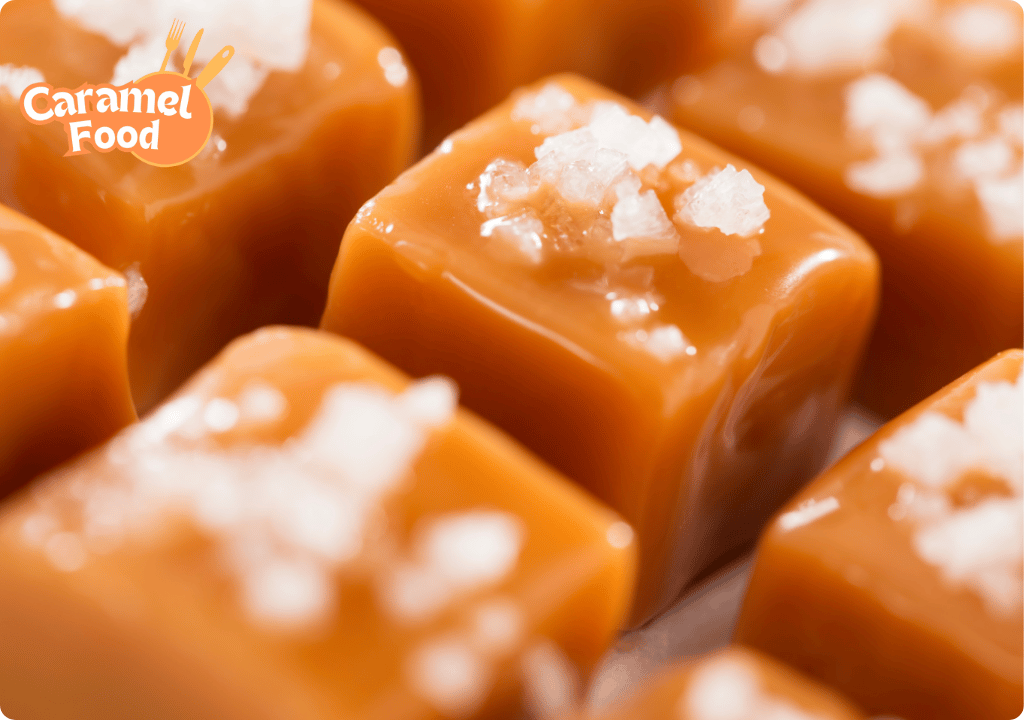
Variations and Enhancements
While the classic vanilla caramel recipe stands robust on its own, culinary creativity allows for numerous enhancements and variations that can further elevate the confectionery experience. These variations can introduce new flavors, textures, and visual appeal, making your caramels a unique creation.
Infused Vanilla Caramels
For a more pronounced vanilla flavor, consider infusing the heavy cream with vanilla beans. Simply split a vanilla bean and steep it in the cream over low heat, allowing the flavors to meld before straining and incorporating into the caramel mixture. This technique enhances the depth of the vanilla flavor, providing a more complex taste profile. The specks of vanilla bean also add a visual element that hints at the richness of the flavor.
Salted Vanilla Caramels
The interplay of sweet and savory can be accentuated by sprinkling flaky sea salt over the set caramels. This variation not only enhances the vanilla’s complexity but also introduces a delightful contrast that excites the palate. The salt provides a counterpoint to the sweetness, balancing the overall flavor and adding a modern twist to the classic recipe. The choice of salt, such as smoked or flavored varieties, can further customize the taste.
Chocolate-Dipped Caramels
For the chocolate aficionado, dipping set caramels into melted dark or milk chocolate introduces a layer of richness and textural contrast. Allow the chocolate to set completely before serving for an indulgent twist on the classic. This addition not only adds a luxurious element but also contrasts the caramel’s chewiness with the chocolate’s crisp shell. Experimenting with different types of chocolate, from white to extra dark, can create an array of flavor combinations.
Nutty Caramel Variations
Incorporating nuts such as toasted almonds, pecans, or hazelnuts can add both flavor and texture to your caramels. Nuts can be mixed into the caramel before setting or sprinkled on top for a decorative and flavorful touch. The nuts provide a crunchy contrast to the chewy caramel, while their natural oils complement the richness of the candy. Roasting the nuts before adding them can enhance their flavor and bring out a deeper nutty aroma.
Storage and Preservation
To maintain the freshness and texture of your classic vanilla caramels, proper storage is essential. Once set, cut the caramel into uniform pieces and wrap each piece individually in wax paper. This prevents the caramels from sticking together and preserves their chewiness. Store the wrapped caramels in an airtight container in a cool, dry place. Properly stored, the caramels can retain their quality for several weeks. The wax paper acts as a barrier, protecting the caramels from moisture and air exposure, which can lead to drying out or becoming sticky. For longer storage, consider refrigerating or freezing the caramels, ensuring they are well-wrapped to prevent freezer burn.
Conclusion
The meticulous craft of creating classic vanilla caramels is both an art and a science, requiring precision, patience, and a deep understanding of the ingredients and processes involved. By adhering to the principles outlined in this guide, you can master the creation of these timeless confections and delight in the satisfaction of crafting a sweet treat that transcends generations. Whether enjoyed as a standalone indulgence or as a canvas for culinary creativity, classic vanilla caramels remain a beloved staple in the world of confectionery. The journey of making caramels not only offers a rewarding experience but also connects you to a rich tradition of candy making, where each batch tells a story of care, attention, and flavor exploration.
